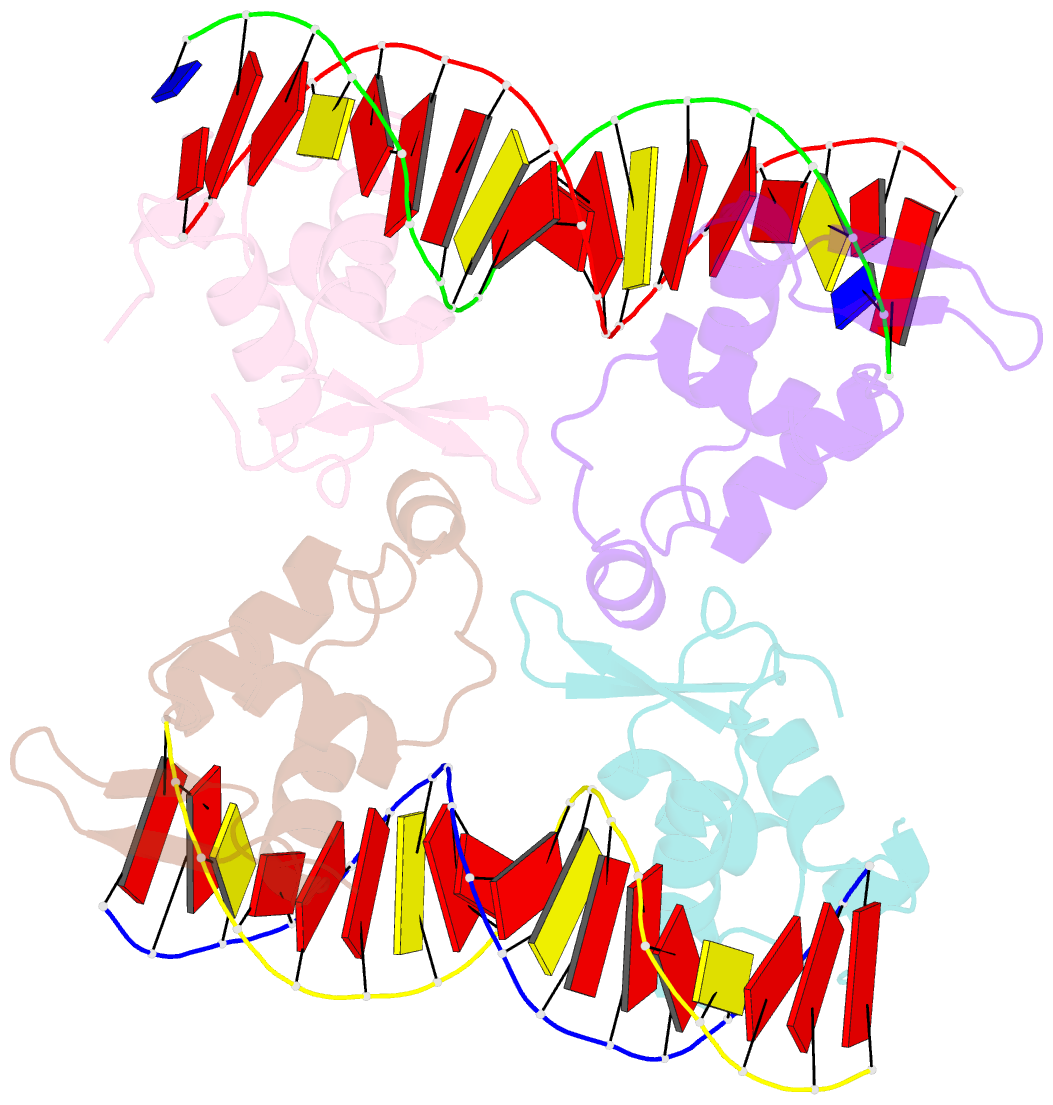Summary information and primary citation
- PDB-id
- 8sro; SNAP-derived features in text and JSON formats;
DNAproDB
- Class
- transcription-DNA
- Method
- cryo-EM (3.3 Å)
- Summary
- Foxp3 tetramer on tttg repeats
- Reference
- Zhang W, Leng F, Wang X, Ramirez RN, Park J, Benoist C, Hur S (2023): "FOXP3 recognizes microsatellites and bridges DNA through multimerization." Nature, 624, 433-441. doi: 10.1038/s41586-023-06793-z.
- Abstract
- FOXP3 is a transcription factor that is essential for the development of regulatory T cells, a branch of T cells that suppress excessive inflammation and autoimmunity1-5. However, the molecular mechanisms of FOXP3 remain unclear. Here we here show that FOXP3 uses the forkhead domain-a DNA-binding domain that is commonly thought to function as a monomer or dimer-to form a higher-order multimer after binding to TnG repeat microsatellites. The cryo-electron microscopy structure of FOXP3 in a complex with T3G repeats reveals a ladder-like architecture, whereby two double-stranded DNA molecules form the two 'side rails' bridged by five pairs of FOXP3 molecules, with each pair forming a 'rung'. Each FOXP3 subunit occupies TGTTTGT within the repeats in a manner that is indistinguishable from that of FOXP3 bound to the forkhead consensus motif (TGTTTAC). Mutations in the intra-rung interface impair TnG repeat recognition, DNA bridging and the cellular functions of FOXP3, all without affecting binding to the forkhead consensus motif. FOXP3 can tolerate variable inter-rung spacings, explaining its broad specificity for TnG-repeat-like sequences in vivo and in vitro. Both FOXP3 orthologues and paralogues show similar TnG repeat recognition and DNA bridging. These findings therefore reveal a mode of DNA recognition that involves transcription factor homomultimerization and DNA bridging, and further implicates microsatellites in transcriptional regulation and diseases.





